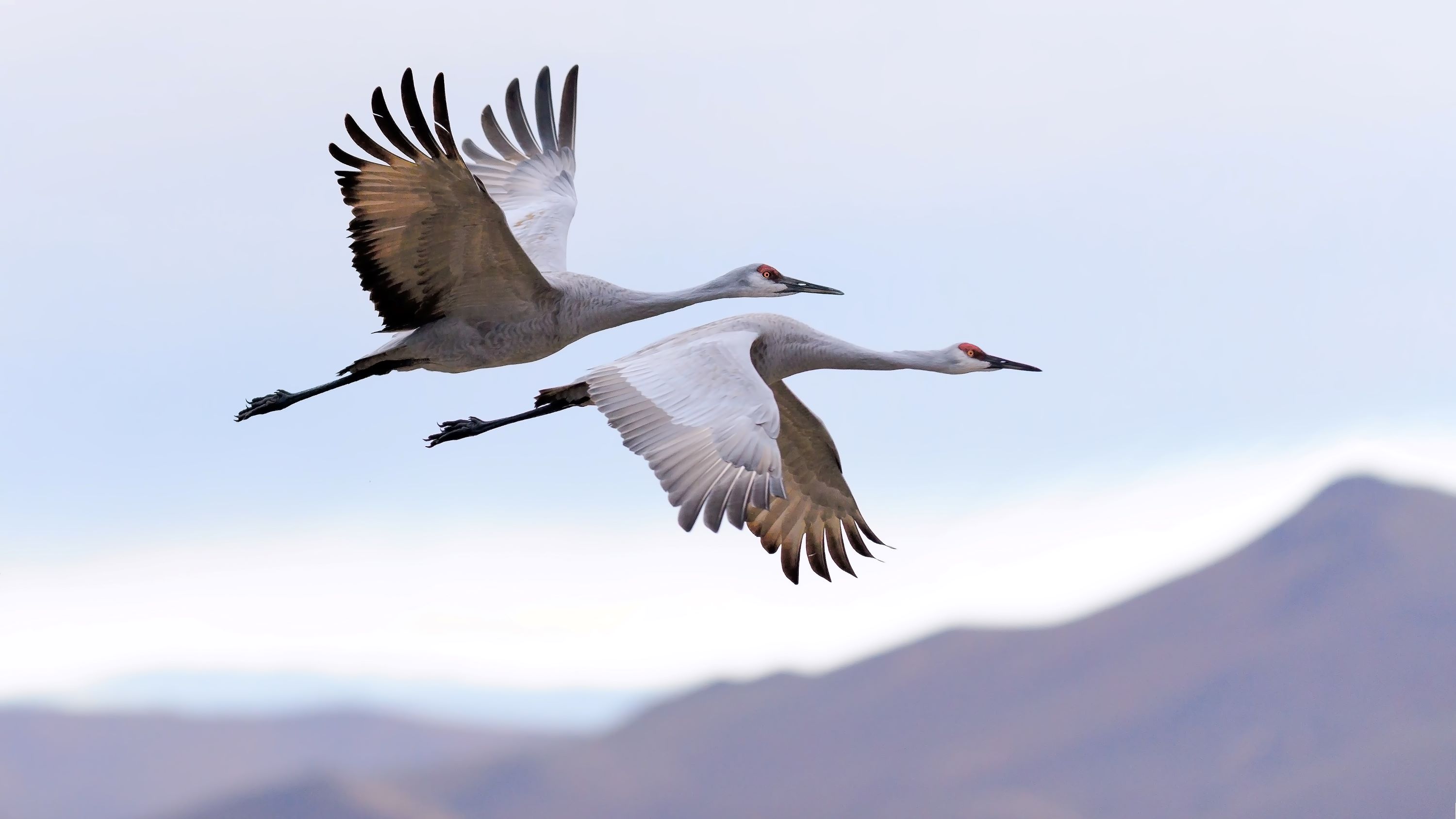
Sandhill Cranes in Utah
Sandhill Cranes, scientific name Antigone canadensis, are a captivating species of large birds known for their graceful presence and enchanting calls. These cranes are identifiable by their statuesque figures, standing up to four feet tall, and their gray plumage, often tinged with rusty shades thanks to preening with iron-rich mud. One of the most distinctive features of Sandhill Cranes is their bright red forehead, white cheeks, and long, dark bill. They are social birds, often found in large flocks, especially during migration and in their wintering grounds.
In Utah, Sandhill Cranes are celebrated visitors, their presence marking the changing seasons. They typically arrive in Utah during their northward migration in late February to early April and can be seen again during their southward journey in September and October. These migrations offer bird watchers and nature enthusiasts in Utah a unique opportunity to observe these majestic birds in large numbers. The cranes utilize various wetlands and agricultural fields throughout the state as stopover points where they rest and feed, replenishing their energy for the long journey ahead.
One of the most renowned locations for observing Sandhill Cranes in Utah is the Wasatch Front, particularly near the Great Salt Lake and its associated wetlands. Areas such as the Bear River Migratory Bird Refuge and the Farmington Bay Waterfowl Management Area become bustling hubs of crane activity during migration periods. Here, the cranes can be seen foraging in the shallow waters and fields, their bugling calls echoing across the landscape. These wetlands provide not only essential stopover habitats for the cranes but also serve as critical breeding grounds for other migratory bird species.
In addition to these well-known locations, Sandhill Cranes also frequent the Uinta Basin in northeastern Utah. The wetlands and agricultural fields in this region offer ideal conditions for the cranes during their migration. The cranes’ presence in the Uinta Basin highlights the importance of diverse habitats across the state in supporting migratory bird populations. Local conservation efforts in Utah focus on preserving and restoring these wetland habitats, ensuring they continue to provide refuge for Sandhill Cranes and other wildlife.
Overall, the presence of Sandhill Cranes in Utah is a testament to the state's diverse and rich ecosystems. Their annual migrations are not only a natural spectacle but also a reminder of the intricate connections within our environment and the importance of conservation efforts to maintain these vital ecological processes.